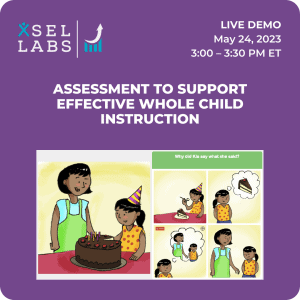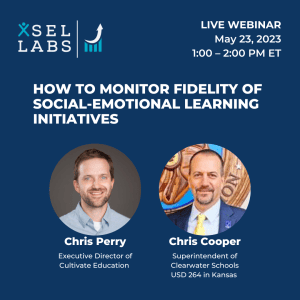In my conversations with educators, the issue of assessment time has come up a lot lately.
Here’s the issue: On the one hand, many educators like the idea of directly assessing student social and emotional skills; and those who do want high-quality and informative assessment data. On the other hand, no one wants to replace instructional time with assessment time.
My colleagues and I at xSEL Labs understand this tension. It’s the main reason we updated SELweb EE, our early elementary SEL assessment, so that it will take about 30 minutes, rather than the current 40+ minutes, while still providing the same high technical quality.
Still, the problem doesn’t go away with a reduced assessment length—it just gets a little smaller.
The question for anyone considering assessing student SEL skills is what could justify using instructional time to administer an SEL assessment?
A Cost-Benefit Approach to SEL Assessment Time
To answer this question, all of us who care about education need a way to think smart about spending time on assessment. We need a way to weigh the costs and the benefits of assessment.
Let’s start with the costs of assessment. The main cost is lost instructional time. Economists would call this an “opportunity cost” where the time spent completing an assessment results in the loss of potential learning that would have resulted had that time been spent on instruction.
Any time spent on assessment should therefore be reasonably likely to result in benefits to teaching and learning that are sufficient to make up for the learning lost from 30 minutes of assessment.
How and how much do does assessment benefit teaching and learning?
Five Benefits of SEL Student Assessment
Here are a few potential benefits of good SEL assessment:
- Assessment can prime students for learning. At a conference a year ago or so, a dozen or so students completed a demo version of SELweb. Afterwards, when students were asked each what the purpose of SELweb was, to a child, they answered that it was to teach them skills need for getting along with others. The assessment clearly gets students thinking.
- Teachers can use the content of assessments to jump-start SEL instruction. After completing a student assessment, in a lesson on problem-solving, for example, a teacher might start the lesson by asking students to describe their understanding of the purpose of the assessment and how it relates to things that happen to them.
- Results from assessments can help teachers understand their students’ strengths and needs so they can use SEL resources to build on strengths and address needs.
- Similarly, the act of measurement can sharpen focus instructional attention. A colleague whose district had recently included SEL on student report cards observed that doing so had drastically increased teacher focus on teaching those skills. The same may be true for other forms of student assessment.
- Results from SEL assessments can help district decision-makers make program investments that build on student strengths and address student needs.
In sum, good assessment may prime students to learn, provide teachers opportunities to jump-start lessons, help teachers focus their instruction, and help district decision-makers make data-informed program investments.
How to Ensure SEL Assessment Benefit Outweighs Cost
My hypothesis is this: if educators do all of the things just described as part of their SEL student assessment initiative, the benefits to teaching and learning will substantially exceed the cost of a half an hour of lost instruction.
If that is correct, the opposite is true too: To the extent that teachers don’t use the assessment to jump-start lessons, don’t review the data to fine-tune instruction, or decision-makers don’t use the data to inform decisions about program investments, then the benefit counterbalancing the instructional opportunity cost will be weaker and, at some point, not net positive.
If you agree, then here is my recommendation: Engage in SEL student assessment when you are prepared to use the assessment experience and data in these ways.
All of us—educators, parents, and assessment-makers alike, share the goal that assessments will improve student outcomes. We at xSEL Labs love working with our district partners to help them make the most of their student SEL assessment data.



